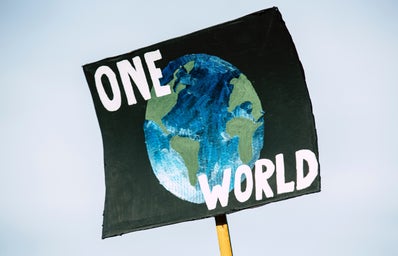There is one day every year when people across the world join together to positively impact the environment, and that is Earth Day. An event that used to occur only on April 22nd, this day has moved into an entire month dedicated to taking steps toward a greener future. Although the task of cleaning up the Earth is daunting, the good news is that it starts with us. We see all over the Internet that even the smallest actions can make a difference, and while that is true to a degree, it doesn’t mean that we can sit back and only make small changes. Sustainable changes in our daily habits can impact those around us. Here is a list of some practical things you can do in your life to make a difference in the environment.
- Order Less Takeout
This might seem like a minuscule action, but the amount of plastic and packaging that comes with takeout orders adds up quickly (Earth.org). That does not even account for the emissions from the transportation vehicle. By making more meals at home, your wallet and the planet are happier.
- Purchasing In-Season Fruits and Veggies From A Farmers Market
Depending on where you live, a farmers market might not be a year-round option, however when it is, get your groceries there instead of a supermarket. Not only are you supporting local businesses, but supermarkets throw out perfectly good foods, simply because they don’t look as nice. By shopping locally, you are eating foods that would otherwise end up in a landfill and cutting emissions and costs to transport the out-of-season foods.
- Thrifting and Selling Clothes
One of the most detrimental impacts on the environment is fast fashion. The fashion industry is responsible for 1/10 of carbon emissions on Earth and 85% of textiles end up in landfills every year (World Economic Forum). To put that into perspective, a garbage truck full of clothes ends up in a landfill every second. Thrifting used clothes is one of the most sustainable things you can do and instead of throwing away the clothes you have no use for, why not make a little extra cash and sell them? When you are looking for some new additions to your closet, check out your local thrift store or Goodwill before heading to the mall.
- Reduce or Remove Seafood Intake
The fishing industry is another big contributor to climate change and plastic pollution. Almost 50% of the trash in the Great Pacific Garbage Patch is discarded fishing nets and lines. These nets can lead to ghost fishing, which is when animals are still trapped in inactive fishing gear. Another negative consequence of commercial fishing is bycatch, which is the marine life that is unintentionally caught in the nets or on the lines as the fishing boats move across the water (Environmental Science). This includes dolphins, sea turtles, and other important species. The best way to preserve our oceans is to remove seafood from your diet altogether and encourage others to do the same.
- Green Transportation Methods
The United States doesn’t have major public transportation systems like other places in the world, but when you are in an area where that is, take advantage of the subway or bus systems. As the weather gets warmer, walking or biking is another greener transportation option that will help reduce greenhouse gas emissions. If none of the above is an option, consider carpooling with others to cut down on overall fuel emissions.
We only have one earth so we need to preserve it. The kind of change that needs to happen is not going to occur overnight, but we can start doing as much as we can today. The small actions that we take every day can snowball into larger movements to impact our environment for good.


